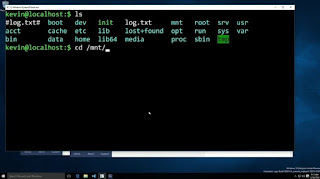Surface Phone in sight?
Microsoft could still have a lot to say on Smartphones, Surface Phone in sight?
A month ago Satya Nadella, CEO of Microsoft, claimed that his company "clearly failed with the mobile phone," implying that his company seemed to give up that battle to focus on other areas such as the cloud and services.
However, the history of Microsoft in mobiles may not have completely finished: the discovery of a project that allows running native Windows 10 applications on the ARM platform gives a new twist to events. We may have to wait a year, but the Surface Phone and a Super Vitamin Continuum are closer than ever to arrive.
An escape for the vicious circle of Windows 10 Mobile
Continuum seemed like a fantastic invention: getting a cellphone or a tablet to have that chameleon behavior and switching between a "mobile mode" and a "desktop mode" brought us definitely closer to the idea of convergence. Microsoft offered the demonstration of that concept with the Lumia 950 and 950 XL, but that platform proved to be still a little green.
At last we could use our smartphone as a PC, but the experience was not complete: we were limited by a system still under development that mostly lacked universal applications, which developers have not encouraged to offer for the (damn) vicious circle Of technology.
If manufacturers do not release a few interesting models users do not buy them, and if users do not buy them developers do not want to invest in that platform, which means that manufacturers also do not take new models.
Emulation is the secret
With Windows 10 Mobile something similar has happened, and despite the virtues and promises of the platform, support from manufacturers, users and developers has been very poor. There has only been one device clearly highlighted in this regard, the HP Elite x3, but since its appearance there has not been much more news in this field ... until now.
However the discovery of this "Project Cobalt" gives us hope. Emulation is the secret ingredient, and the key is that developers will not have to do anything to make their applications run on Windows 10 Mobile, because the emulator will make them run on processors based on the ARM64 platform that currently dominates The segment of smartphones.
There are some requirements, such as the fact that the device in question has 3.5 GB of RAM (or more), and apparently the processors that will offer compatibility with that project are the future Snapdragon 835 that will make their appearance on mobile probably in The second quarter of 2017.
The dates coincide, because it is expected that Windows 10 'Redstone 3', the next major update of Windows 10, will appear in the third quarter of next year. That makes us think of a possible Microsoft event in which the company would officially present this project.
Not only that: perhaps it would also launch its own Surface Phone along with devices of high range of partners like HP, that seems very involved in this effort. Some believe that if they did, those devices would actually arrive in 2018 rather than in 2017, so here we will have to be patient once again.
Nadella does not give up on mobiles
To all these indications are added the statements that the Financial Review of Australia published Satya Nadella yesterday. In this journal the CEO of Microsoft talked about how the company was focusing on productivity, management and mobile security, but made a particularly significant comment:
We will continue to be in the mobile segment not as defined by market leaders today, but only what we can do in what is the most definitive mobile device.
Nadella added that after buying Nokia they stopped doing things that were "me-too" and started doing things that "even if today they are on a smaller scale, they are very focused on a very specific set of customers that need a specific set of Benefits that are differential and with which we can do a good job. "

Project Cobalt may not be the only ace in Microsoft's sleeve: in Windows Central they talk about two other Microsoft engineering designs that could have an "astronomical" impact according to their editors, although they can not give details about them at the moment .
One of them, they point out, is closely related to Continuum, and although none of the three projects could finally see the light, they do make one thing clear: that Microsoft could still have something (a lot?) To say in the segment mobile. We hope and wish it to be so.


Comments
Post a Comment